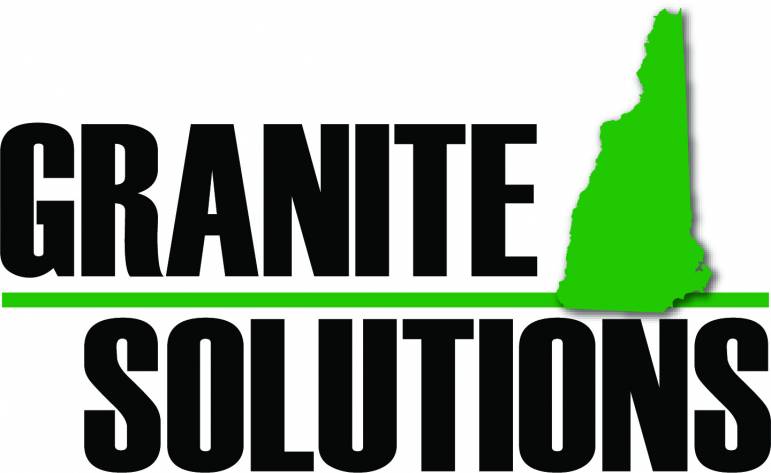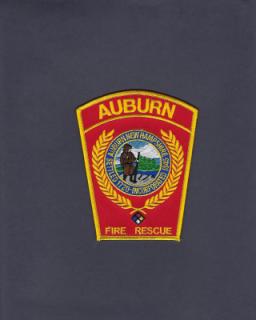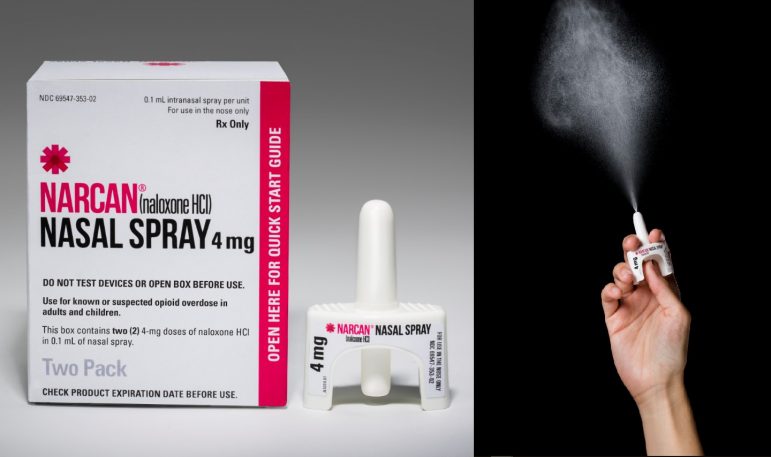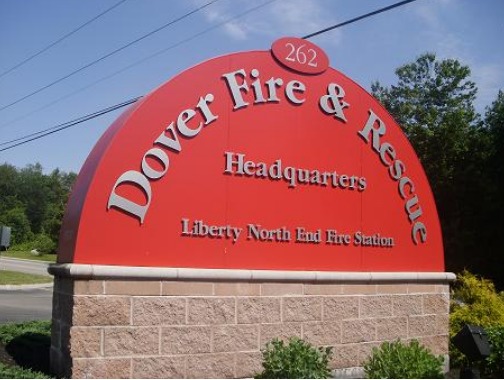
While Safe Station continues in Manchester and Nashua as an alternative “doorway” into recovery, the following is a look at what other fire departments around NH are doing in their communities to help shepherd people who are in crisis to the next step in recovery:

Related Stories
- Safe Station: Still on the front lines of recovery
- The Doorway is a place to turn for help, but not the solution
- How fire departments around NH are making a difference in addiction crisis
AUBURN
Auburn, a town of about 5,000 people which abuts Manchester, opened a Safe Station three years ago with both police officers and volunteer firefighters participating.
Police Chief Charles “Ray” Pelton said two of his part-time police officers are full-time firefighters with the Manchester Fire Department.
Auburn, he said, was getting “spillovers” from Manchester and emergency responders wanted to put a plan in place to address it. Pelton spoke with Manchester Fire Chief Daniel Goonan and other firefighters about Safe Station before initiating the program.
He explained that at night the police station is not staffed but anyone arriving at the safety complex will see the Safe Station sign over the entrance with a telephone number to call. Dispatch can relay the need to an officer on patrol who will go to the station but also call in a volunteer firefighter to make an assessment of the individual.
Safe Station in Manchester is called to find out what intake facility is available and the firefighter will take the individual there.
Sometimes, Pelton said, the individual is with a family member who will take them to the facility or sometimes the person wants to drive there themself.
In the past three years, he said, 13 people have availed themselves of Safe Station. This year, he said, three people sought help — two from Auburn and one from Epping. He said Auburn residents have also sought help at Manchester’s Safe Station. He believes the numbers are low at Auburn’s outpost because people aren’t aware of the program.
“If someone wants help, why not help them out?” he said. “It costs nothing. We’re already here.”
 BERLIN
BERLIN
Berlin Fire Chief James Watkins said his department has not reached the point where it could open a Safe Station. It has applied for a grant that would allow it to train firefighters in how to use Narcan kits and perform CPR.
“Unfortunately, the epidemic took off so quickly it took us a while to get caught up,” he said.
Watkins, who became the city’s fire chief two months ago, said currently firefighters assist Berlin EMS at overdose scenes.
Once trained, Watkins said firefighters will be able to leave a Narcan kit with the family and teach them how to use it should there be a second overdose.
“It’s not a cure but at least it will help in the short term,” he said.
Watkins has headed the department for just two months but previously was the fire chief in Gorham where they looked into opening a Safe Station. However, the closest available help was in Laconia, an hour and 40-minute drive.
“Our fear was we would have somebody show up and say he needs help now and not be able to get them the help,” he said.
Now, he said, the Androscoggin Valley Hospital has more resources through The Doorway initiated by Gov. Chris Sununu.
 CONCORD
CONCORD
The Concord Fire Department has implemented a comprehensive program that includes enrolling people struggling with opioid addiction into treatment programs, thanks to grants totaling $263,000 from the federal Substance Abuse and Mental Health Services Administration.
Jeffrey Stewart of Nashua was hired in April as Concord’s Program Director of Project FIRST (First Responders Initiating Recovery, Support and Treatment) which began operating on June 24.
The NH Project FIRST is a four-year $3.1 million federally funded program through the First Responders: Comprehensive Addiction and Recovery Act (FR-CARA). It is now in its third year.
Paula Hooligan of the New Hampshire Division of Fire Standards and Training is the state program manager. She said seven cities and towns are in the program and others are in the application process. Besides Concord, those in the program are Dunbarton police and fire; Epping police and fire; Hooksett Fire Department, Laconia Fire, Plymouth Fire and Salem police and fire.
The program trains and funds fire and law enforcement personnel who encounter someone who is overdosing to conduct a follow-up visit at that person’s home and provide resources for treatment or medication to the affected person and/or their family.
“It’s meeting people where they are at,” Holigan said.
Not every fire station can provide follow-up care due to staffing and resources, but they can leave a naloxone kit with the person or their family during the emergency, plus they can contact the nearest Doorway or contact 211 for information and referral, Holigan said.
First-responders are trained to understand how someone becomes addicted and why relapse occurs. This program is called “OUD in the 603” (for Opioid use disorder). The training also contains information on suicide and who is at risk along with compassion fatigue training
Stewart has more than 30 years of experience as a paramedic, was a combat medic, is a certified ARISE Level 2 interventionist and a recovery coach.
“What makes Concord fire unique is that we actually enroll a patient in our program and I case manage them,” he said. “So when they are ready to go into treatment I facilitate that.”
He meets with the patient, does a full assessment and works on barriers they may have, such as no insurance, homelessness, mental health issues or the need for medical treatment for an infection or some other illness.
“They may not be ready to go into treatment when I first interact with them,” he said. He keeps in contact with them, doing some motivational coaching to help them want to get treatment.
“Once they say yes and they’re ready to go, boom we get them into treatment,” he said.
He uses The Doorway and other treatment programs where he has contacts. The program operates with the collaboration among various departments, agencies and organizations including the fire, police and public health departments, Riverbend Community Mental Health and its mobile crisis unit, Concord Hospital, the Homeless Provider Network, social services, among others.
Fire Chief Daniel Andrus said when Manchester’s Safe Station began operations, the city council asked him if they could do the same. Andrew explained then that because of the increasing number of emergency calls, the city’s fire stations were unstaffed a significant portion of the time.
“There is no single solution,” Stewart said of the opioid epidemic. “There is no silver bullet. This is going to take a collaborative effort to make any dent in it. Complex problems require multi-tier solutions.”
As of Dec. 3, he’s had 40 referrals; nine people fully enrolled in the program; he is coaching several others and three people have successfully completed the program and are sober.
Soon, the program will be expanding to the Capital Area Mutual Aid Fire Compact which is comprised of Concord and 22 surrounding towns. The compact has agreed to the education of first responders and the Naloxone kits but the individual town will have to agree to Stewart providing the same service he does in the city. There is no cost to the town or city since the program is fully funded by the federal government.
Stewart believes he can handle the additional work.
“I would love to be able to say I have too many patients and we need help,” he said. If the third year of grant funding is approved, he has a plan to train people to do what he does.
Concord is also working on a sustainability model for the time when federal grants are no longer available.
“We have a tentative plan we are exploring,” he said.
(Susan Geier contributed to this report).
 DOVER
DOVER
Paul Haas, chief of Dover Fire and Rescue, said in January 2017 the city implemented the Community Access to Recovery Initiative where anyone needing help for addiction would go to either the police or fire stations. Once there, an individual is connected to a recovery coach who would then help him get the services needed.
Only about a half-dozen people come to the station for help each year, he said. He thinks that is because the fire station is not centrally located while the police department and recovery center are.
Haas said the program is similar to Safe Station but differs in that the police department takes the lead role in processing people and getting them into the system to connect with services. He said the police do check to see if the individual is wanted on a warrant but unless it is a very serious issue, the individual is not arrested. People don’t have to worry about retribution, Haas said.
Police do dispose of any drugs or hypodermic needles they find, said Dover Police Capt. David Terlemezian.
“The whole point is to try to keep people alive and get help,” he said.
Initially, Haas said, there were not enough recovery coaches to operate the program 24/7. However, he said once the SOS Recovery Community Center, a peer-based support system for people in all stages of recovery, opened in April 2017, the number of recovery coaches increased allowing the program to operate around the clock.
Terlemezian said the department began to look at instituting a program back in 2015 after the Gloucester, Mass., Police Department started the Angel Program, creating a stigma-free guaranteed entry to treatment. Addiction was reframed as a disease under the program.
Terlemezian said Dover knew it could not pay for the elaborate program Gloucester initiated so it looked to a program operated in Scarborough, Maine. That program relied on recovery centers to link people to treatment programs.
He said not everyone needs an in-patient treatment program and oftentimes what is needed is support or a sponsor. What Dover decided to do was have the fire and police departments act as a conduit to recovery coaches who could link people with the proper services.
Now that both SOS Recovery and The Doorway are in the city, he said, fewer people are coming to the police station. Since 2016, he said only 26 people have sought help at the police station.
Haas said his department applied for a SAMHSA grant through the state and is expected to receive about $21,000 worth of Narcan kits that can be left at scenes of overdoses, in the event of a second overdose. Family members and individuals will be shown how to use them and training will be offered in CPR.
The grant has to be accepted by the City Council and then, Haas said, he expects it will be implemented next month.

KEENE
When NH Doorway opened last January, Keene was in a good position to transition to it because it had been part of the Cheshire County Addiction Assistance Recovery Initiative (CHAARI), according to Fire Chief Mark Howard.
CHAARI, funded for 18 months with a state grant, was a component of the Coordinated Access Point Program, that the state-funded for 18 months as a pilot program to address the opioid crisis.
It was in development for a year before it opened on May 1, 2016, the same month Safe Station in Manchester debuted. Howard said it began when then Keene Mayor Kendall Lane called Keene police and fire officials and others to discuss how to address the problem.
Before the pilot program was started, a person who overdosed would be taken by fire department ambulance to the hospital. The hospital would provide treatment the patient would allow and then the patient would walk out and not be connected to any treatment service.
“When we took them to the hospital we saw it as a revolving circle,” Howard said.
Then State Senator Molly Kelly and John Manning, CEO, of Southwestern Community Services (SCS), worked together to put a model together, reaching out to fire and police chiefs, the sheriff, state police and the hospital.
Regular meetings were held by the mayor concerning the structure of CHAARI with about 20 city, state and county agencies, along with businesses and agencies providing addiction and mental health services participating.
Ultimately, the state awarded a grant to SCS for an 18-month pilot program.
The result was a program where a person who needed help for addiction would be taken to the hospital. Once there, he would be seen in the emergency room if needed, if not he would go to a private area of the hospital where an on-call recovery coach, trained by the hospital, would meet with him and connect him to the services needed.
“We didn’t want the recovery coaches coming to the street or someone’s home or location from a safety standpoint,” he said.
Howard said the Safe Station program wouldn’t work for the city or surrounding towns because of staffing issues — many have only part-time police departments or volunteer fire departments — and because it was decided a regional program was needed.
“So that model wasn’t going to work,” he said. There were also times when Keene’s two stations were unstaffed because of the increase in emergency calls.
“We were having 911 encounters anyway and we were just going to get them to the hospital. Right off the bat, there were a number of successes,” he said.
The CHAARI program today is non-existent, replaced by The Doorway and Hub and Spoke system.
CHAARI had some issues such as accountability of recovery centers and staffing of recovery coaches, who were mostly volunteers, he said.
Still, he said, there were a lot of great things that came out of it and the reason why the transition to the Doorway was easier than in other parts of the state.
Now, the emergency room connects to the Doorway program which then links to the Hub and Spoke agencies for treatment.
The concerning piece that still remains is the individual who doesn’t want the help, Howard said.
“That is a frustration of emergency services because we are there to help people,” Howard said. There have been times when a firefighter resuscitates someone who then gets up, walks down the street and says he doesn’t want any more help.
“We are still persistent. But two to three days later we’re dealing with that same patient. It’s wearing on responders,” he said. The buzz words for it are “compassion fatigue,” he said.
He once resuscitated someone who 10 minutes later started arguing with him saying, “Why did you save me?”
And then there’s the call of an overdose of a man or woman found down in a hall where a young child is crawling on the patient saying, “Mommy, wake up. Or Dad wake up,” Howard said.
“A lot of us have young kids, so you leave that call and you say, “What the hell just happened?” he said.
Firefighters, however, sign up to provide emergency services and Howard said “in our career, those needs are going to change. What is alarming is the frequency of the various serious calls when someone is unconscious, not breathing and may not have a pulse. The frequency of those alls has increased greatly over the past 10 years.”
Before then, he said he might have gone one five to 10 calls of someone in cardiac arrest — from a motor vehicle accident or medical event — in a year.
“Now, guys sometimes go to five calls in a single day or five calls in a week in the last five years,” he said.
 LACONIA
LACONIA
For several years, the Laconia Fire Department has used the services of Navigating Recovery of Lakes Region to connect recovery coaches those wanting treatment for addiction.
Fire Chief Kirk Beattie said his department just does not have the staff to support Safe Station.
Those recovery coaches assess the individual, whether that means hospitalization is warranted or the need for rehab, he said.
“This model we have been using works very well,” Beattie said.
He also said the fire department works closely with the police department which in 2014 decided to focus on recovery and treatment instead of arresting people struggling with addiction.
Officer Eric Adams became its Prevention, Enforcement and Treatment Coordinator and monitors overdose calls. Adams goes to the call to talk to the individual because that is the time when a person is most likely to be persuaded to seek treatment.
As overdose calls increased, Fire Lt. Brian Keyfe, who is a trained recovery coach, began doing the same work. The department received about $4,000 in federal funds from NH Project FIRST which they used to train other firefighters as recovery coaches to cover all shifts.
It means that when an ambulance and fire truck are sent out on an overdose call, one of the four firefighters arriving on the scene is a recovery coach who can talk to the revived patient and hopefully get him to agree to treatment.
Keyfe has his regular firefighter duties but has a fire department issued cell phone so people needing help can call him at any time. The department’s three ambulances carry his business card with his contact information on them so responders can provide it to patients. Besides the contact information, the card states, “Your Life Matters.”
The emergency responders are also connecting with groups in the city, such as the Community Recovery Center, where Keyfe serves as vice-chairman. Adams is on the board of the Lakes Region Partnership for Public Health and Partners in Community Wellness, he said.
“We have a seat at the table in the community,” he said. “They get insight from us as to what we are seeing — boots on the ground— responding to these overdoses. And we benefit from them by being embedded in the community and their recovery efforts. It’s an all-hands-on-deck approach.”
From 2016 to 2017, because of the work Adams and Keyfe do and additional services being offered in the Lakes Region, Keyfe said overdoses dropped from about 12 in 2016 to 5 in 2017.
The number of people being administered Narcan was cut in half between 2016 and 2017, he said.
“Our numbers are way down with the community effort,” he said.
When they started handing out the Narcan kits, there were a lot of questions about whether that would enable someone’s drug addiction.
He said the kits have to be replaced every year and that he has not seen where they have been repeatedly used.
One mother, he said, had used it to revive her son. “If she didn’t have it, I’d say she wouldn’t have a son,” he said. The son went into recovery and is doing well.

PORTSMOUTH
Portsmouth Fire Chief Todd Germain said his department is not looking to open a Safe Station because of staffing issues. Someone has to be there 24/7, he explained, but when a crew is sent out on an emergency call, no one is at the station.
Currently, he said when firefighters are called to an overdose scene, they treat the individual and/or take him to the hospital. That is their only involvement, he said.
He, too, has applied for the SAMHSA (Substance Abuse and Mental Health Services Administration) grant through the state that would allow firefighters to follow-up with those individuals and help them access services that are offered through Safe Harbor Recovery Center in Portsmouth or The Doorway in Dover. If Portsmouth gets that grant, it will also allow them to provide Narcan kits to family members or the individual for use in the event of a second overdose.

This story is part of Granite Solutions, a year-long project by the Granite State News Collaborative of which Manchester Ink Link is a member organization. We are 18 news and educational organizations working collaboratively on stories that are important to news consumers around the state. For more information visit www.collaborativenh.org. Follow us on Twitter @NewsGranite and like us on facebook @collaborativenh.







